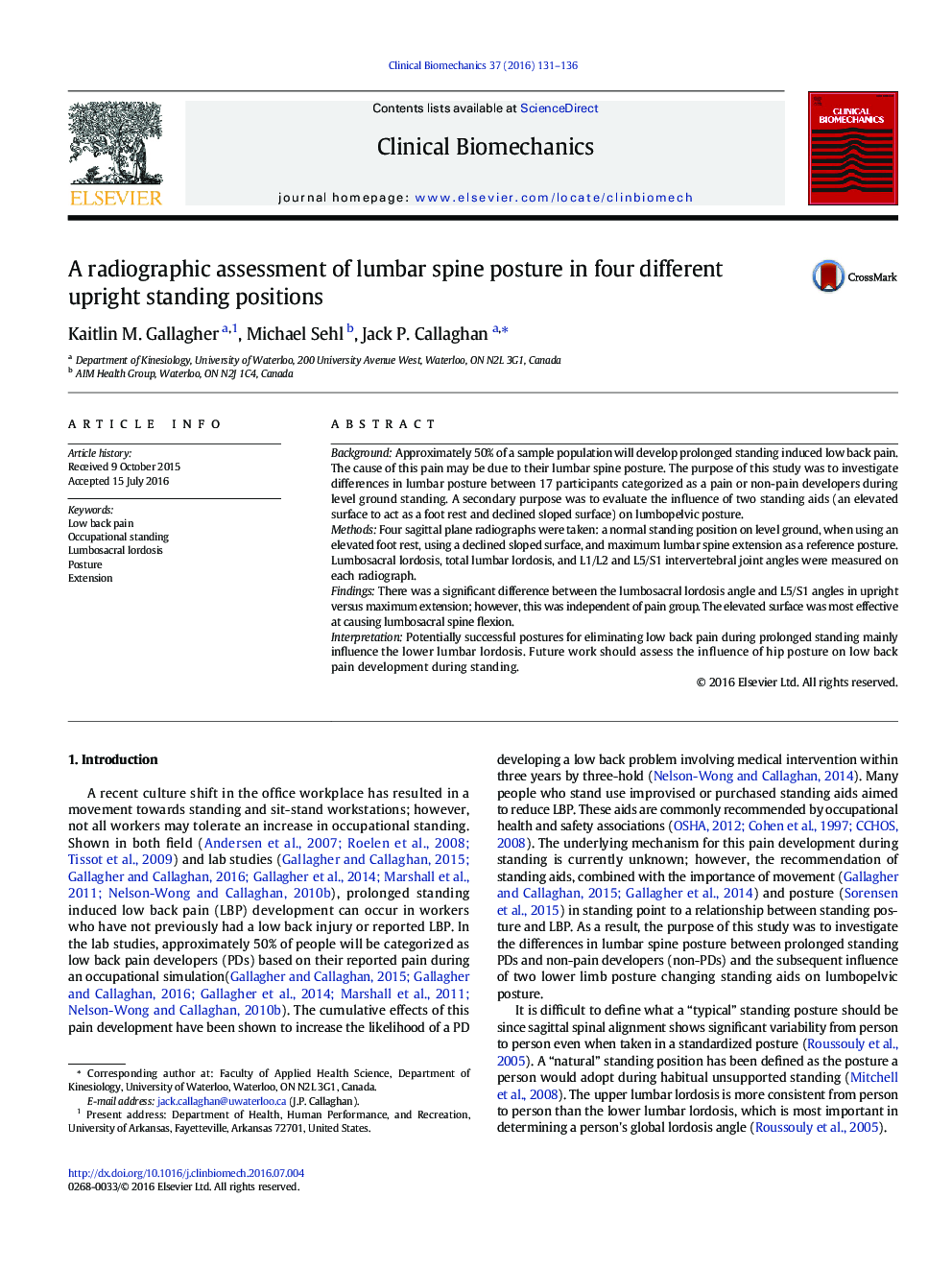| Article ID | Journal | Published Year | Pages | File Type |
|---|---|---|---|---|
| 4050026 | Clinical Biomechanics | 2016 | 6 Pages |
•Compared lumbar spine posture of low back pain developers in standing to controls.•Assessed the effect of three standing positions on lumbar spine posture.•No difference between pain groups for all measures in upright and maximum lumbar extension.•Elevating one foot brings lower lumbar spine into flexion.•Future work to assess hip posture during prolonged standing.
BackgroundApproximately 50% of a sample population will develop prolonged standing induced low back pain. The cause of this pain may be due to their lumbar spine posture. The purpose of this study was to investigate differences in lumbar posture between 17 participants categorized as a pain or non-pain developers during level ground standing. A secondary purpose was to evaluate the influence of two standing aids (an elevated surface to act as a foot rest and declined sloped surface) on lumbopelvic posture.MethodsFour sagittal plane radiographs were taken: a normal standing position on level ground, when using an elevated foot rest, using a declined sloped surface, and maximum lumbar spine extension as a reference posture. Lumbosacral lordosis, total lumbar lordosis, and L1/L2 and L5/S1 intervertebral joint angles were measured on each radiograph.FindingsThere was a significant difference between the lumbosacral lordosis angle and L5/S1 angles in upright versus maximum extension; however, this was independent of pain group. The elevated surface was most effective at causing lumbosacral spine flexion.InterpretationPotentially successful postures for eliminating low back pain during prolonged standing mainly influence the lower lumbar lordosis. Future work should assess the influence of hip posture on low back pain development during standing.
